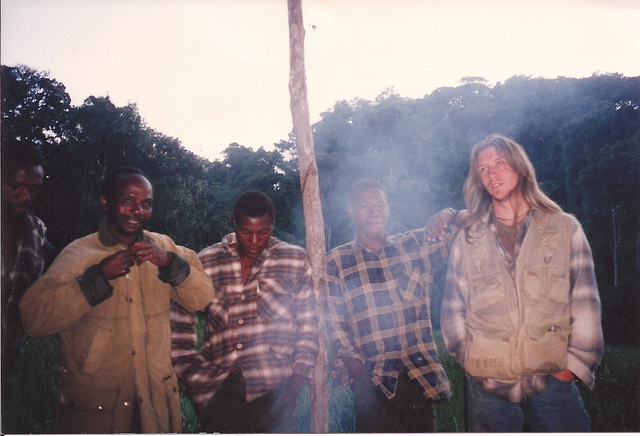|
ITFC as I
experienced it back then- John Berry
"Although I have moved into a
very different field –
working in marine chemistry,
and chasing new molecules
from the sea, these days – I
will always have fond
memories of my days
following the Bwindi
gorillas (and collecting
their food plants and poo).
I do even still get the
occasional inquiry about
Aframomum and gorillas.
I was down there between
1995- 1997, when working on my PhD
research which focused on
the chemistry of the
Mountain Gorilla diet, and
particularly the possible
role of some of the
antimicrobial components of
their plant-based diet in
relation to their enteric microflora (i.e. bacteria in
their guts). In part, this
evolved out of an interest
in “zoopharmacognosy” - or
the use of plants, and their
chemistry, by animals for
self-medication - and in
some cases, the food items (e.g
the bark of Dombeya) which
contained the antimicrobial
metabolites were apparently
eaten/used primarily when
the gorillas showed signs of
gastrointestinal illness
(based, at least, on the
observation of the
trackers). More generally
though, I showed interesting
patterns/correlations of
apparent sensitivity and
resistance to antimicrobial
components relative to their
consumption of these
plants/food items. In
particular, this difference
was based on range (i.e.
Comparison between the lower
elevation Buhoma and higher
elevation Ruhija).
I (still) have (this) photo
on my office desk. Ah, the
good old days down at the
swamp!

This was when we were
following a gorilla group
being habituated by ITFC
(starting around 1994-1995).).
By the time that I was
finishing 1997, they were
actually quite accustomed to
seeing us.
One amusement to share from
the times:
Aaah, there were many, but I
have to say the top two that
pop to mind had to do with
being in the field with the
gorilla group during their
habituation.
I vividly recall all of us
squatting in the bush
alongside the (gorilla) group
pretending to be fellow
(apparently hairless)
gorillas to put them at ease
with our presence – this, of
course, involved pretending
to chomp on leaves, and
mimic their constant grunts
and farts. Glamorous stuff!
I also will always remember
one of the more dominant
females running past me, as
she left and snapping a
10-cm wide branch in front
of my face – presumably to
let me know that it could
have just as easily been my
neck. That sort of stuff
sticks with you."
John Berry is an Assistant
Professor with the
Department of Chemistry and
Biochemistry,
Marine Science Program at
Florida International
University. He was with ITFC
in the years 1995-97. |
